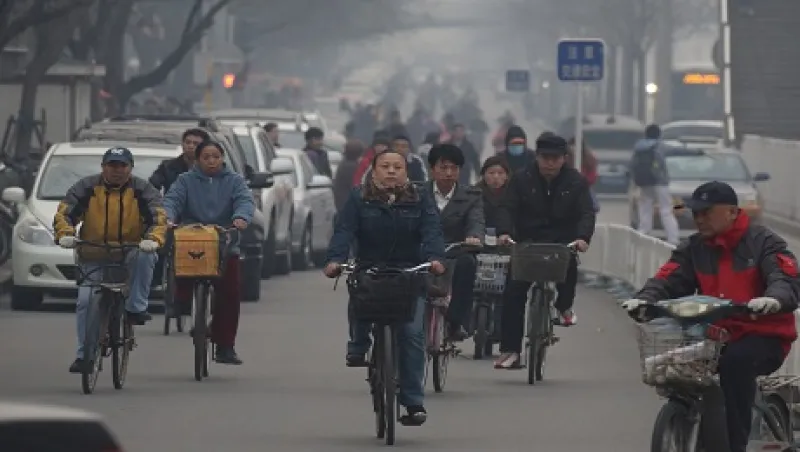There is no doubt that China's economy is slowing. The National Bureau of Statistics of China reported in April that the country's real gross domestic product rose by 7.7 percent in the first quarter from the same period a year earlier, falling short of both market expectations and the previous quarter's 7.9 percent growth.

Bei Xu
|

|
| Natixis's Bei Xu, top, and Patrick Artus |
In fact, the slowdown risks being much sharper than the consensus view. China's recent sluggishness stems from a number of structural problems, including excessive debt, slowing productivity growth, waning competitiveness and an aging population. Unless Beijing undertakes reforms to address those problems, the result is likely to be a drastic economic slowdown in coming years, with growth potentially falling to just 4 percent. Any evidence of weakness could have dramatic effects on the global market, judging from the way the price of gold tumbled in April following the publication of the latest Chinese economic figures.
Admittedly, China's growth looks set to remain strong in the near term, largely as a result of government efforts over the past year to accelerate the approval process for investment projects. However, such measures can't sustain growth in the medium to long term without structural reforms, such as improving access to finance for private enterprises, strengthening the social welfare system and relaxing administrative control over the economy.
Just a few weeks before the release of the first-quarter data, Fitch Ratings lowered its rating on China's long-term debt from AA- to A+, while Moody's Investors Service knocked down its outlook from positive to stable. Both agencies cited the country's rapidly expanding debt levels.
China's debt is notably high in comparison with both developed countries and emerging-markets economies. The ratio of bank loans to GDP reached 134 percent in 2012, compared with 110 percent in Brazil, 75 percent in India and 40 percent in Russia. Demand in China has been underpinned by the debt accrued by paragovernmental enterprises, state-owned companies and local authorities. Indeed, a large proportion of the country?s bank credit is channeled toward the construction and infrastructure sectors, which are largely public.
The second problem is slowing productivity, reflected in a decline in capital goods imports. China's sophisticated industry is stagnating except in a couple of key sectors — such as automobiles, aerospace and telecommunications equipment — that are largely supported by public facilities. Up-market brands are still rare in other manufacturing sectors. By contrast, the country's construction and related industries are gaining weight in global markets. Such a distorted scenario explains the current slowdown in productivity.
Related to the slowdown in productivity is a deterioration in cost-competitiveness, the third structural problem. Unit wage costs in China have increased by 25 percent relative to those in the U.S. since 2006, leading to an increase in the offshoring of Chinese industry to lower-cost countries. In addition, there has been a rise in Chinese overseas direct investment. Although this is not yet noticeable, such trends will eventually lead to a slowdown in Chinese exports.
The last structural problem is a looming decline in China's working-age population that is predicted to start in 2022. Although it's possible that part of the working-age population will move from agriculture to industry and services (in most cases allowing them to work longer), there would still be greater taxation pressure on the labor force as the number of pensioners in the population increased. Couple this with the slowdown in productivity and the country's potential growth rate could effectively fall by half, to about 4 percent a year.
Combine excessive indebtedness with slowing productivity, a deterioration in cost-competitiveness and an aging population, and it is small wonder that many investors have become cautious. Only with serious reform can these structural issues subside, allowing China to avoid a dramatic economic slowdown.
Bei Xu is the Asia economist at Natixis, and Patrick Artus is the bank's chief global economist.






